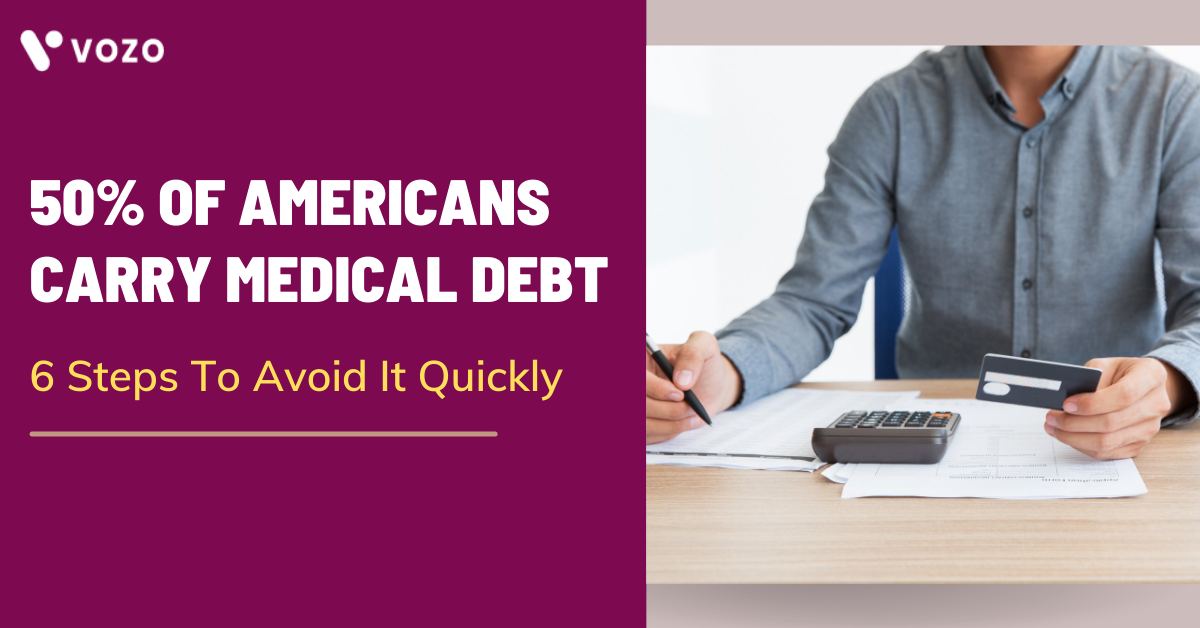50% Of Americans Carry Medical Debt: 6 Steps To Avoid It Quickly
The US medical billing services market was valued at USD 4.64 billion in 2020 and is expected to reach approximately USD 8 billion by the end of 2026.
As every one of us knows that the Covid-19 pandemic has a serious effect on medical billing and medical debt. The introduction of new medical codes for various treatments during the pandemic increased the dependency on medical billing service providers. This tremendously increased the adoption of medical billing software even among the smaller clinics.
The growth of the U.S medical billing market will contribute to the following key factors:
- Shift Towards Value-based Medical Billing
- Encouraging Automation in Medical Billing
- Introduction of Cloud-Based Medical Billing
- Increased Outsourcing of Medical Billing
- Introduction of Telemedicine Billing
- Increasing Healthcare Consolidation
Now talking about medical debt, it’s hard to believe that many people wind up with medical debt even when they have health insurance. Health insurance covers many costs including doctor’s fees, testing equipment, and medications.
The patients are responsible for paying a portion of these costs. But sometimes, that portion will be higher than expected. So, understanding health insurance better can help you to prevent medical debt easily.
In this article, we provide you with the 8 best steps to avoid medical debt quickly.
How to avoid medical debt? – 6 quick steps
1. Save for your emergency medical expenses
You can never predict when an emergency or sudden injury or illness will happen. That’s why it is important to save money aside for medical emergencies, besides just investing in health insurance. You can do so in your regular savings account itself or a health savings account if possible.
How much money you should save for surprise medical costs?
Your emergency health funds need to be enough to cover all your living expenses for nearly 3 to 6 months. But if you feel that’s too overwhelming, approximately $1000 is a good starting point and you can gradually increase it. Your target savings for emergency healthcare expenses should be equal to your health insurance’s maximum out-of-pocket costs.
If you don’t have emergency funds, then you might be forced to go into medical debt. So saving money for emergency expenses is one of the best ways to avoid medical debt.
2. Understand your health benefits completely
Understand and be aware of your insurance plan’s policy regarding out-of-network providers. If you don’t get any coverage for physicians considered out-of-network, staying in-network could save your expenses.
Understanding the important steps needs to see specialists or continue with specific diagnostic tests or certain procedures. Similarly, you might need to go through a special precertification process before having surgery or certain tests performed.
RELATED: Medical Billing For Faster Reimbursements:How To Succeed?
3. Read all your medical bills carefully before paying them
Before paying any of your medical bills, review them for better accuracy and question your service providers if anything doesn’t look right.
For example, you’re suddenly being charged $400 for lab work that your insurer has always covered. It could be that your coverage changed this year and you didn’t realize it. But it could also be that your lab tests were coded or billed incorrectly, causing your insurance company to deny the claim rather than approve it.
Medical debt can be harmful to your finances, so checking your medical bills correctly will help you avoid landing in medical debt when healthcare expenses arise.
4. Negotiate the cost of treatment
There are a lot of differences between the cost a healthcare provider will charge an insurance company and the sot it will charge you when you are paying as an individual. If you know going into a treatment that you’ll be stuck with the medical bill, try to negotiate with your provider to a lower price. Medical offices will often consider leaving you with less cost to pay. Doing so will help you to avoid your medical debt.
There are many websites and online tools in the market which help patients to compare prices between different healthcare practices and care centers. The patients can enter their insurance type and other details to estimate the end price both in and out-of-network.
5. Plan your budget with ongoing medical expenses
We all know that not all medical bills are emergencies. The non-emergency doctor visits could also drive you into medical debt if you don’t budget for copays.
Analyze your medical bills from the past year and find out what you spend on average each month for non-emergency visits. Then, consider that sum into your budget so that you can easily avoid medical debt.
6. Enroll in a health savings account (HSA)
A health savings account is a special type of savings account that goes toward medical expenses like copayments and deductibles. The government doesn’t tax this type of account. Many health insurance companies and banks offer HSAs.
Not everyone can open an HSA. Most HSAs are only available to people with high-deductible health insurance plans. General savings account through a bank can also go toward medical expenses.
Getting started with Vozo!
The above-mentioned steps will help you to avoid medical debt easily and quickly. If you are looking for great insights about medical billing?
About the author

With more than 4 years of experience in the dynamic healthcare technology landscape, Sid specializes in crafting compelling content on topics including EHR/EMR, patient portals, healthcare automation, remote patient monitoring, and health information exchange. His expertise lies in translating cutting-edge innovations and intricate topics into engaging narratives that resonate with diverse audiences.













